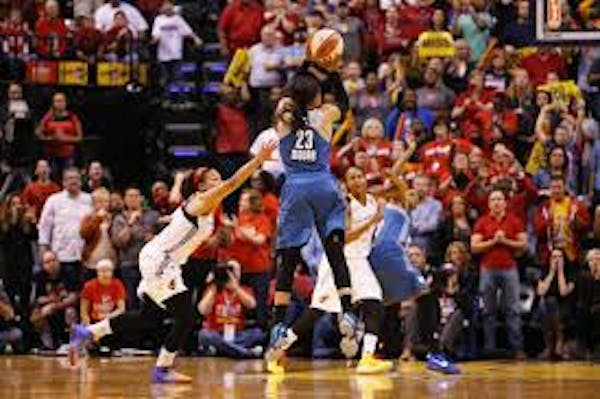At the 2017 NBA draft at Barclay's Center in Brooklyn, Commissioner Adam Silver announced that the Timberwolves had selected Lauri Markkanen. He grabbed a Wolves cap on his way up the stairs, put it on and hugged Silver.
Markkanen being a Timberwolf wouldn't last long, as he was part of a trade that sent Markkanen, Zach LaVine and Kris Dunn to the Bulls for Jimmy Butler and that year's No. 16 pick, Justin Patton.
That trade led to the Timberwolves' first playoff appearance since 2004 the following season. But it also led to a complete dismantling and rebuilding of the team the following season, with Butler forcing his way out of town via trade.
And that eventually led to the firing of coach and team President Tom Thibodeau, who was in charge during both Butler deals.
What happens if Thibodeau, contrary to every basketball bone in his body, decides not to swing that draft-night deal, and stick with a core of Markkanen, LaVine, Karl-Anthony Towns and Andrew Wiggins. How much different is the course of Wolves history? Do they still make the playoffs in 2017-18 and are those players still the core of this roster nearly three years later?
"I would love to say that the playoff drought had ended, but you know, I can't say that with confidence because of the West and how good it is," former Wolves forward Cole Aldrich said.
Aldrich played for the Wolves in the seasons before and after the trade. He said the roster for the 2017-18 season would have been radically different had the Wolves not traded for Butler. That likely meant there would be no moves that came after, such as the signing Taj Gibson and Jeff Teague — veteran talent to complement Towns and Wiggins to make the playoff push.
Aldrich said the team was eyeing a three-year window to make that playoff push when he initially signed. The trade quickened that timeline.
"We all knew that first year was not going to be that good," Aldrich said. "The second year we thought, OK, if we start to win some games and get on a roll, we have a year under our belt, we can get to another higher number of wins. Then that third year really make that push into the playoffs."
That would have been last season, and if they didn't make the playoffs, it was going to start getting more expensive to keep the core intact. Wiggins signed a maximum contract before the 2017-18 season. Towns followed suit the following season and LaVine signed a four-year, $78 million deal before last season with the Bulls. That would have been a lot of cap space tied up in those three players.
It also raises this question: Would Thibodeau still be the coach if he had committed to developing young players instead of cashing in those assets for Butler?
"I would probably say no, because nowadays coaches, their leash isn't real long," Aldrich said. "I guess for Thibs it might've been different because he was the president and the coach. So being the judge and jury makes you a little bit more, with his price tag, [owner] Glen [Taylor] might've rode it out a little more."
It's one thing for fans to have patience with a young group. Would Thibodeau and his demanding coaching style have had it? The trade was a sign that perhaps he did not.
"He got through that first year, and I think he kind of looked at it and was like — I can't win with young players," Aldrich said. "I don't have enough time to win with young players because they're going to fire me before that. I need to bring in guys that I trust."
When Butler wreaked havoc across the team with his trade demands, some fans pined to have LaVine back in a Wolves uniform with Markkanen alongside him. But the Bulls have been unable to build around the pieces they received for Butler. Now they are going through a front- office overhaul the same way the Wolves did under Gersson Rosas a year ago.
Both teams ended up in the same place. Perhaps the results wouldn't have been much different no matter what happened.
Editor's note: Do you have any suggestions for great "what-if" moments in Minnesota sports history? Send them to Michael Rand at mrand@startribune.com.

Fewer antlerless permits issued to hunters, but weather, harvest outlook upbeat for deer opener

Kaprizov, stitched up and missing a tooth, piles up points in Wild victory over San Jose

Jackson leads rally, and Ravens stop 2-point attempt to hold off Bengals 35-34

Wolves make a rapid, resounding fourth-quarter rally past the Bulls

